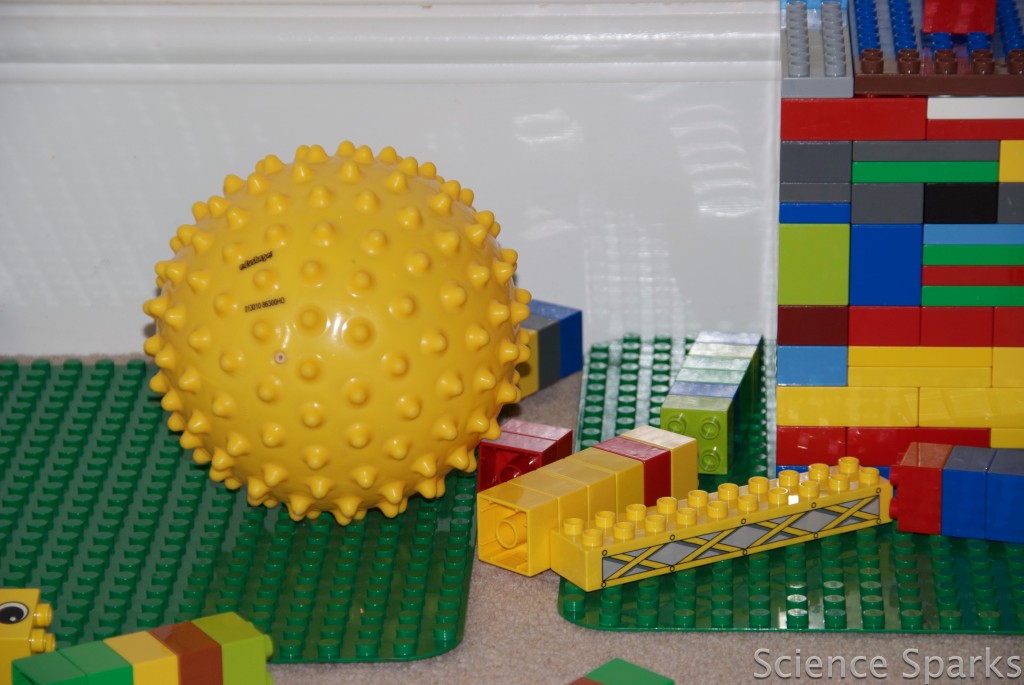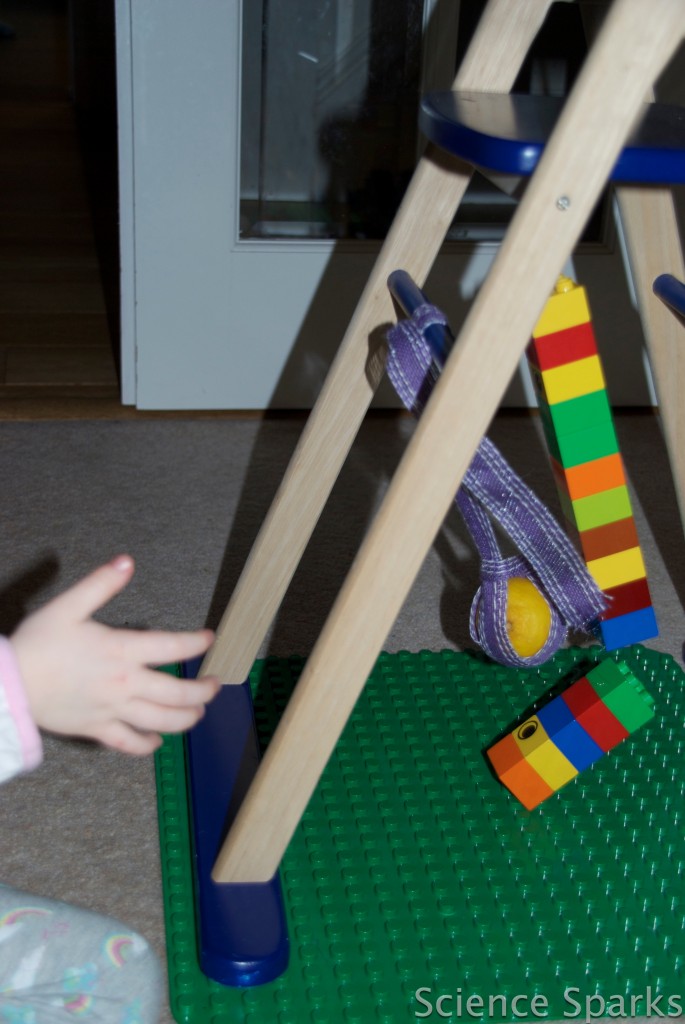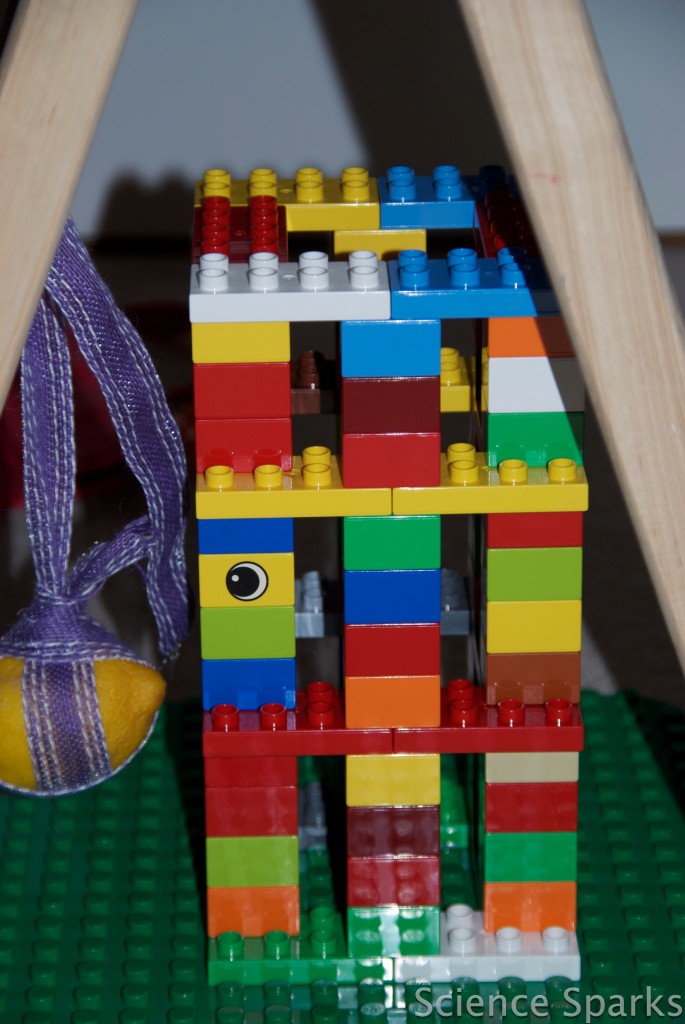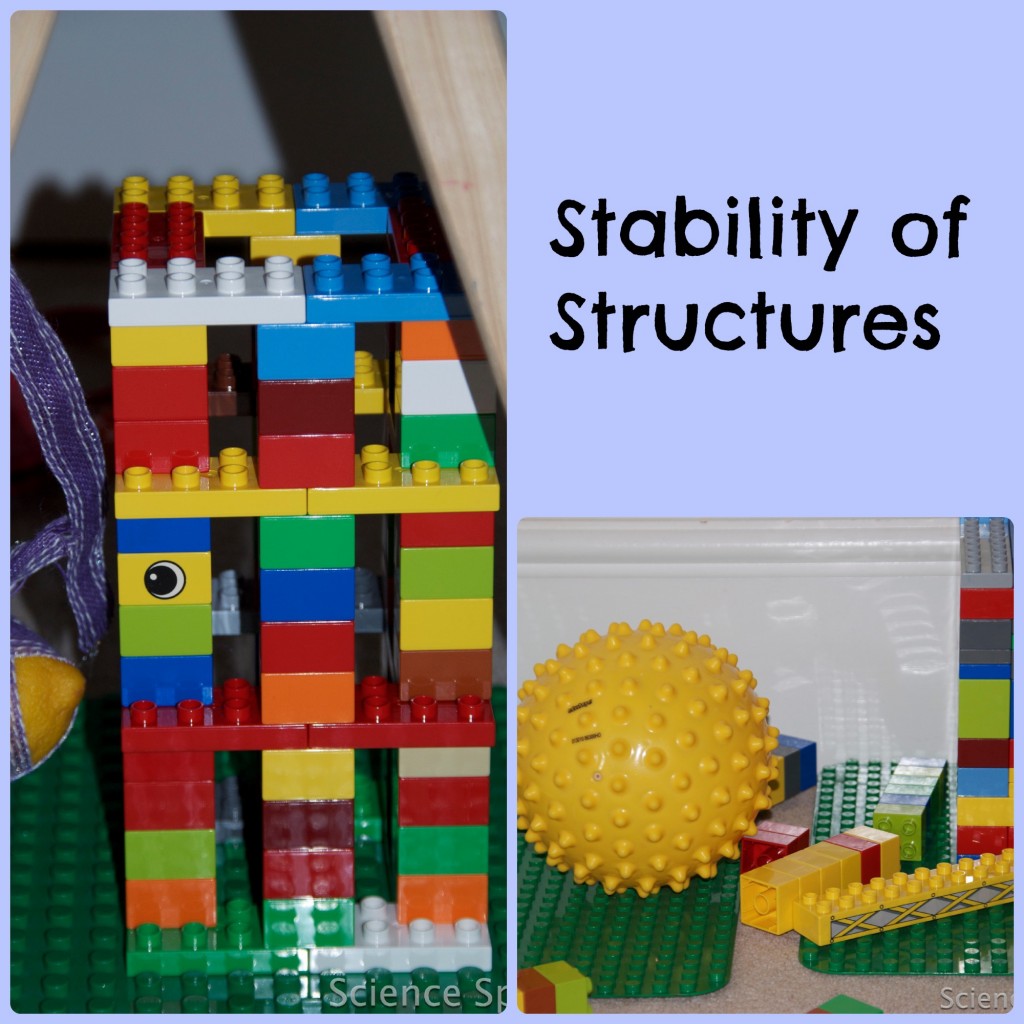I wanted to get my children thinking about the process of investigation today, so we talked about how we could test whether some structures were stronger than others using DUPLO. They decided to build three different shaped towers and test them by rolling a ball at them.
The first is a simple tower, the second has 4 legs, and the third is a solid structure. You can see that each tower is the same height. Z rolled the ball at each quite forcefully. The first two toppled immediately while the solid one stayed standing.
We decided that there were some faults with our investigation. Z had basically kicked the ball each time, but we didn’t know if some of the kicks were harder than others. I helped them out a bit, and we decided we needed as many factors as possible to stay the same. We talked about how the speed at which the ball hit the towers and the direction at which it hit them might be important, so we decided to try and control these.
To really try and keep our variables constant, I used a doll’s highchair to string up a ball like a pendulum. To make sure the same force was applied each time, we held up the lemon ( our load ) to 90 degrees and dropped it towards the towers from there.
We built the following towers and tested them one at a time, counting the number of pendulum swings it took to make the towers collapse.
1. column of bricks
2. columns of bricks joined only at the top
3. columns of bricks joined throughout the structure
4. columns end on
5. columns
6. Super special tower
It was very evident that the less structure there was there, the more unstable the tower. A single tower collapsed within a single swing of the lemon. The double-sized tower took two swings in either orientation. When reinforced all the way through it still only lasted 2 swings. The quadruple tower lasted 6 swings.
We also then started talking about making things stronger without using as many bricks, perhaps even leaving gaps like a building has for floors. However the smashing fever had set in and we think we may leave this subject for later exploration 🙂
Our special tower was within the limits of our investigation, indestructible.
The Science bit
When carrying out a scientific investigation you should reduce the number of variables to as few as possible. Ideally the factor you are investigating should be the only variable, everything else should be constant.
Last Updated on April 28, 2023 by Emma Vanstone






I have a science project with my son coming up..we are doing it on the earthquake proof buildings. I wasnt sure how to make the buildings with legos but your post helps so much! Would you mine if I used some of your ideas and cited you on his Science Project? Thanks, I found you on pinterest =)
That is fine with us. I’m so glad we were helpful! x
I don’t think you can get a project any more fun than smashing things! What a great learning idea!
Stopping by from Take A Look Tuesday! http://queenofsavings.com
Oooh what a bit of Lego sciency fun!! Brilliant!!
Thanks for sharing on Kids Get Crafty!
Maggy
Kids just love to knock down towers, so this is such a fun way to incorporate science into play! I am pinning this activity.
Oh, my kids would love this! Knocking down block towers is their specialty lol. Thanks so much for sharing with Tuesday Tots!
Yay, glad you like it. x
Thanks for having us!